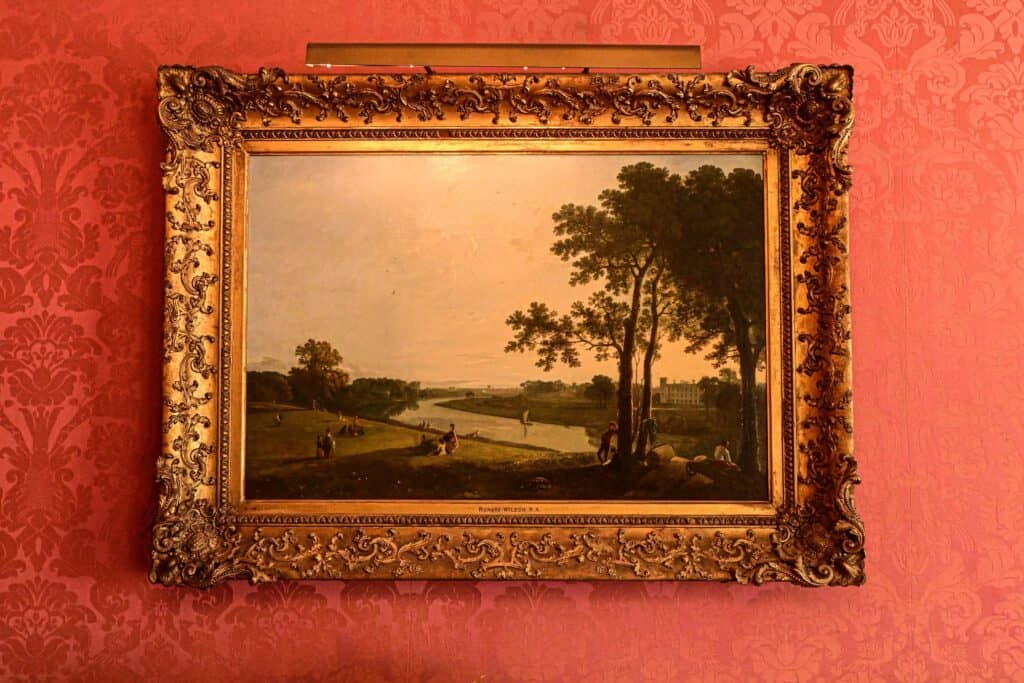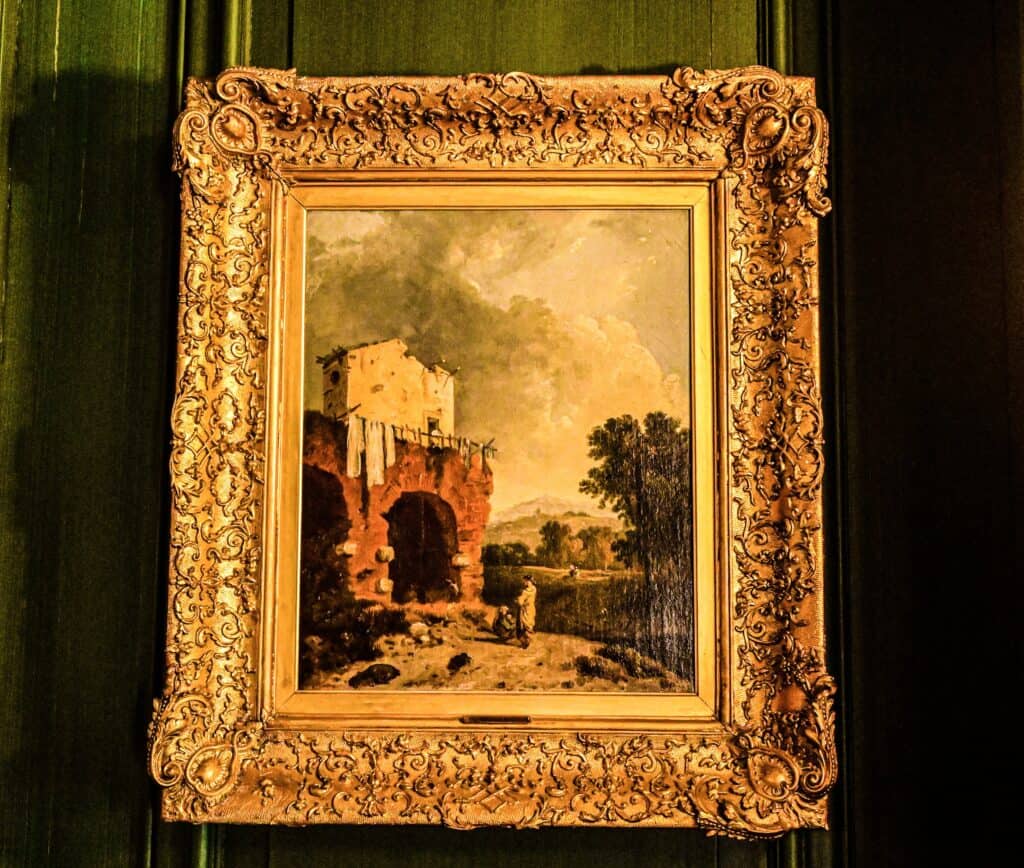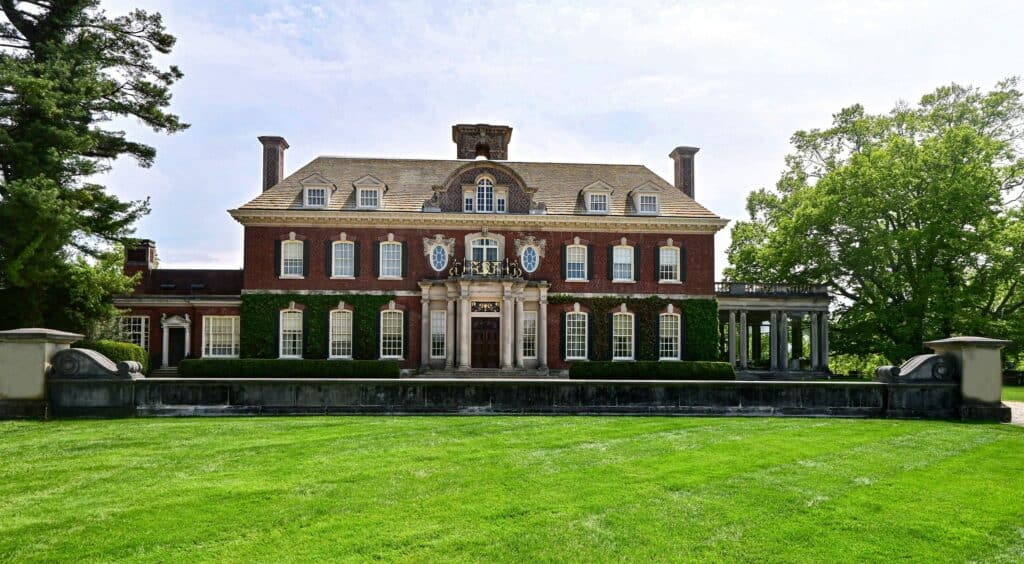Treasures of Westbury House: The Paintings of Richard Wilson
For a quick getaway on a summer’s day, a visit to Westbury House may be just the place to dream of far-away places. In the historic period rooms are paintings depicting the English and Italian countryside, Roman ruins and a great English country house that shares decorative features with Westbury House.
Two paintings that are easily viewed are the east wall of the Red Ballroom which has a large painting by Welsh born artist Richard Wilson (1714 – 1782) who introduced landscape painting to Great Britain and influenced John Constable and William Turner. Wilson was born to an affluent family who encouraged his artistic development. He apprenticed with British artists and developed a reputation as a portrait painter, which was the most lucrative subject matter for an artist at that time. Landscape painting and genre scenes were considered inferior subjects to portraiture or scenes from mythology with a moral message, so popular at the time. In the early 1750’s, Wilson travelled to Italy to study classical architecture and under the influence of Italian painter Francesco Zuccarelli, he became totally absorbed with landscape painting, a radical change for a 40-year-old portraitist with a following in Great Britain and the reality that landscape painting was deemed unimportant and thus less profitable.

As Wilson developed his style, he often incorporated structures such as classical ruins and country estates of wealthy landowners. The painting in the Red Ballroom is labelled “Syon House from Richmond Park” depicting a sprawling vista of activity along the River Thames. Despite the painting’s title, Syon House, which is a popular tourist attraction today, isn’t the main subject. The scene is dominated by the Thames with Syon House modestly depicted on the north bank. The south bank is closer to the viewer as if they were observing the scene in real time. This area was part of the early creation of what would become the largest public park in the United Kingdom and the lively scene depicts laborers, casual visitors strolling, and in the foreground an artist sketches under a tree while a gardener takes a break resting on his wheelbarrow. In the very foreground, crumpled on the ground is a dark blue jacket, its gleaming gold buttons inviting us to shed the cares of the world and enjoy the journey.
If you follow the Thames eastward, in the far distance is a church and beyond that the village of Isleworth with a classical folly (small columned temple) in the mid-ground. A fisherman on the opposite shore hauls in a catch – while Syon House, home to the Percy family for over 400 years, is a serene presence. One connection Westbury House has with Syon House is the influence of the Adams Brothers – game-changing late 18th architects and designers who with Thomas Chippendale introduced the Neoclassical style to England. They were commissioned to update aging interiors in Syon House by creating rooms decorated by refined classical columns, figures from Greek and Roman mythology and elaborately plasterworked ceilings. In Westbury House, the Adam Bedroom is a guest room located in the northwest corner of the second floor. It is painted a stark white with a ceiling adorned with decorative portrait medallions, a style that was influenced by excavations of Pompeii and Herculaneum in the early 18th century.
Another of Wilson’s paintings is in the Study. In a quixotic reversal, Wilson depicted a dilapidated secondary structure of Emperor Hadrian’s country compound. Many historians see this as Wilson’s commentary on the rise and fall of great civilizations while others note that the artist was simply using a smaller canvas with a focus on one element. In the second half of the 18th century affluent English families would visit a list of must-see European monuments as described in their taste-making guide books. Referred to as the Grand Tour, this was a pilgrimage to Italy and France, and later to Egypt and Syria, that lasted into the early 20th century. Since Wilson made numerous versions of this painting, we may assume that they were produced as souvenirs. Wilson referred to these income-generating scenes as “breeders.”
Considering that the interior of Westbury House is meant to evoke a sense of mid- to late-century Georgian England, the focus on English and European artists from that era, as well as the furnishings and decorations, were intended to transport you to that era.

